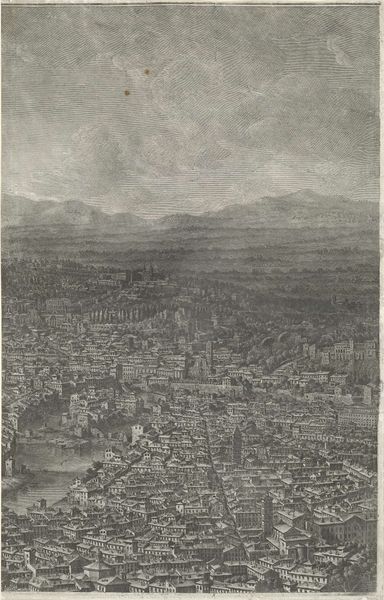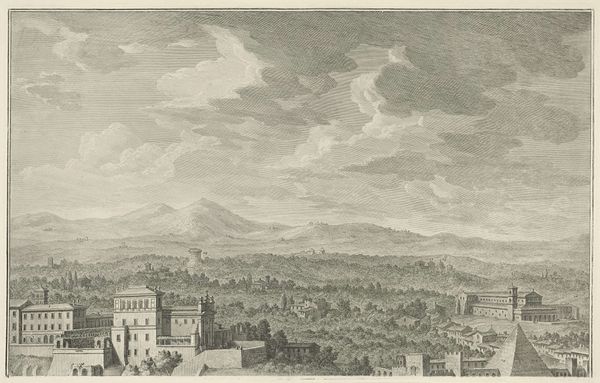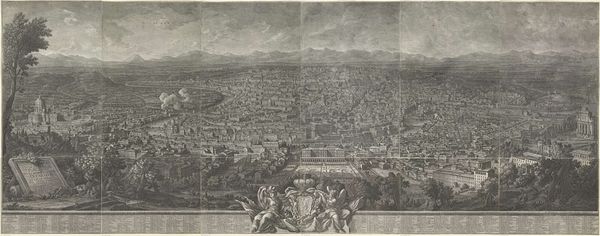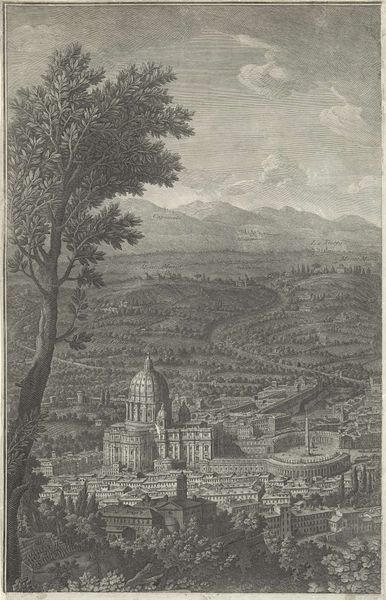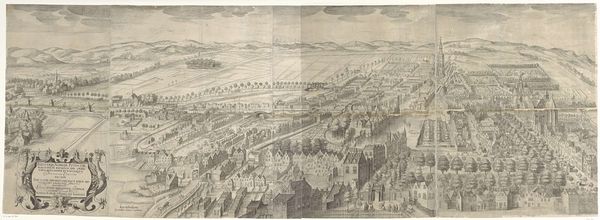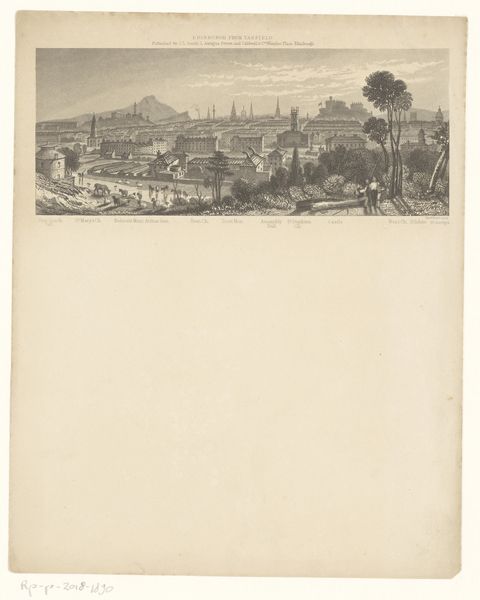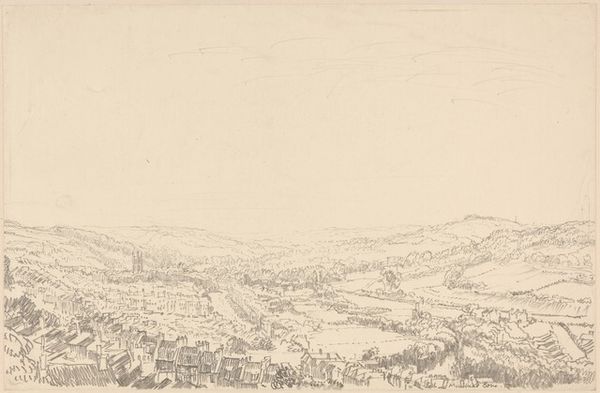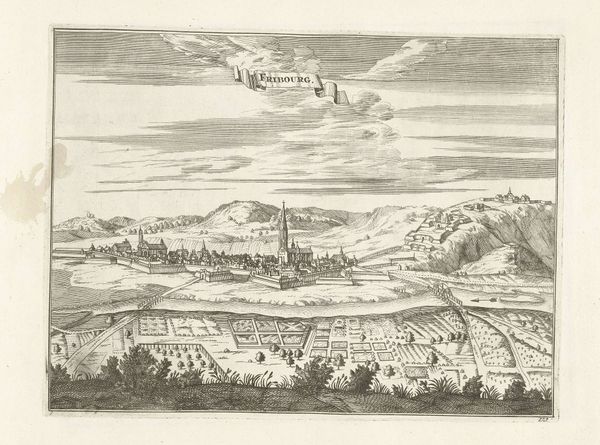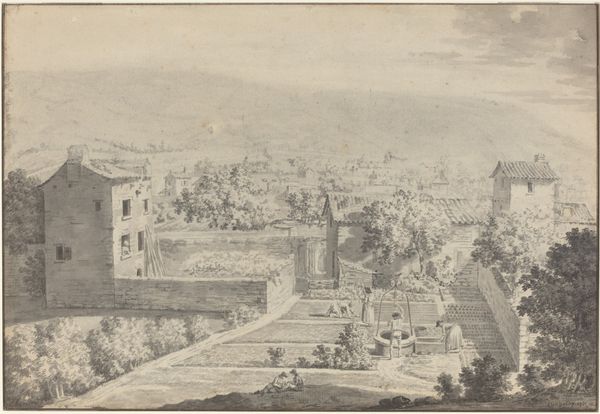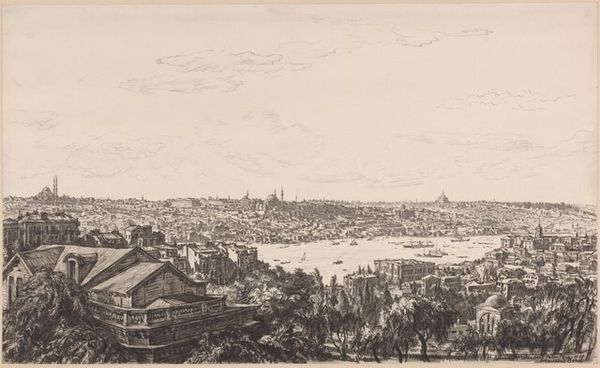
print, etching, engraving
# print
#
etching
#
landscape
#
15_18th-century
#
cityscape
#
italian-renaissance
#
engraving
Dimensions: height 688 mm, width 445 mm
Copyright: Rijks Museum: Open Domain
Editor: Here we have Giuseppe Vasi's "Panorama van de stad Rome" from 1765, made using etching and engraving. It’s incredible to see so much detail rendered with those materials. What’s most striking to me is just the sheer labor involved in creating this sprawling cityscape. What are your initial thoughts when you look at this? Curator: Indeed, the painstaking work is central to its understanding. Beyond just depicting Rome, the print itself embodies 18th-century practices of documentation and dissemination of knowledge. The value wasn't solely in the aesthetic representation, but in the process – the labour of the artist, the technical expertise required for etching and engraving, and its function as a commodity to be traded. It prompts us to think about the social and economic conditions that enabled its creation and circulation. Editor: So, you’re saying the method and the distribution are as significant as what is being shown? Curator: Precisely. Consider the availability of materials: the paper, the inks, the metal plates, and the access Vasi had to them. Also consider his patrons – who were they, and what did they want this print to communicate about Rome and themselves? These engravings weren't just passively admired, they were actively used to shape perceptions. How do you see this print fitting into the larger context of 18th-century European society? Editor: That's fascinating. I hadn’t considered it as part of the broader production and consumption cycle of that period. Thinking about who was buying these prints... maybe Grand Tourists documenting their travels? Curator: Exactly! The print becomes evidence of status, and a token of one’s cultural experiences. What have you found most compelling when analyzing it with a focus on labor and material processes? Editor: Definitely the immense time and skill it must have taken Vasi to produce such a detailed image. It makes me appreciate the work far more. Thank you. Curator: And thank you. By investigating the material conditions and social contexts, we can glean deeper meanings and insights than merely focusing on iconographic analysis alone.
Comments
No comments
Be the first to comment and join the conversation on the ultimate creative platform.


